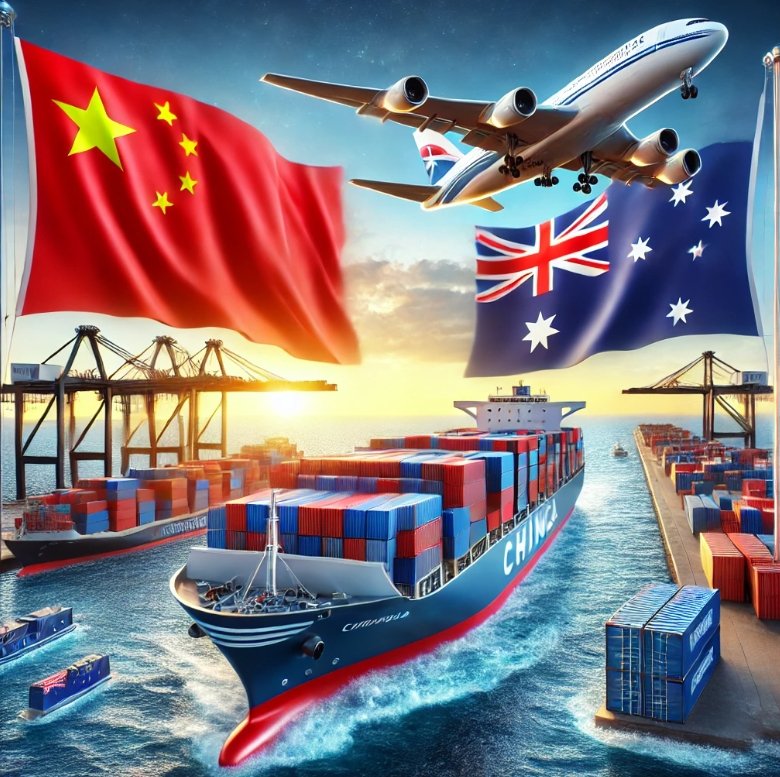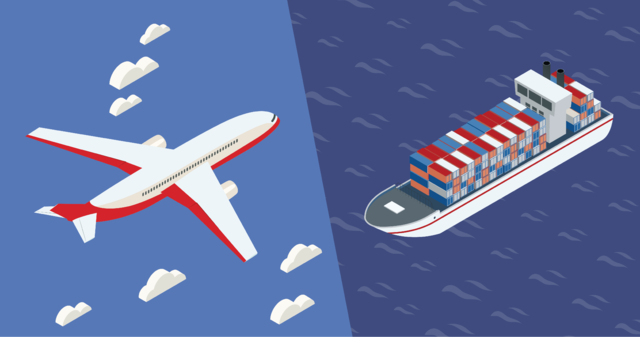- By TOP CHINA FREIGHT
- September 15, 2025
- Shipping
Table of Contents
Freight cost from China to Australia is one of the most important factors importers consider when planning logistics. Shipping prices directly influence profit margins, delivery schedules, and overall supply chain performance. However, costs are not fixed. They fluctuate depending on container type, transport mode, customs regulations, and market trends. This guide explores every key element you need to know to calculate, manage, and optimize freight expenses when importing from China to Australia.

What Determines Freight Cost from China to Australia?
Several elements shape freight rates between China and Australia. Beyond distance, logistics providers calculate prices based on shipment size, container availability, port charges, fuel adjustments, and customs duties.
Container Type:
A 20ft container costs significantly less than a 40ft high cube.
Transport Mode:
Sea freight is the most economical, while air freight is faster but more expensive.
Seasonality:
Peak seasons such as pre-Christmas or Chinese New Year push prices up.
Port Charges:
Loading and unloading fees differ across Shanghai, Shenzhen, and Sydney.
Understanding these factors helps businesses anticipate fluctuations and negotiate better contracts with freight forwarders.
How Much Does Sea Freight Cost from China to Australia?

Sea freight remains the most popular option for importers due to its affordability. Costs depend on full container load (FCL) or less than container load (LCL).
Sea freight is ideal for businesses moving large volumes at lower costs. However, importers should plan ahead to account for longer transit times.
How Does Air Freight Compare to Sea Freight Costs?

Air freight offers speed, but the price difference compared to sea shipping is significant.
| Shipping Mode | Average Cost (per kg) | Transit Time | Advantages | Disadvantages |
|---|---|---|---|---|
| Air Freight | $6 – $12 | 3–7 days | Fast, reliable | High cost |
| Sea Freight | $1 – $2 per kg (FCL) | 18–25 days | Cost-effective | Slow transit |
Air freight suits urgent goods like electronics or perishables. However, for heavy cargo, sea freight reduces cost per unit significantly.
Is Rail Freight Available from China to Australia?
Unlike routes to Europe, there is no direct rail freight from China to Australia due to geographical barriers. Instead, businesses can combine rail to Southeast Asia with sea freight to Australia. This multimodal solution shortens transit time compared to traditional sea-only shipping, though costs may be higher than standard ocean freight.
What Customs Charges Affect Freight Cost?

Customs clearance is a crucial cost component when importing to Australia. Importers must comply with the Australian Border Force regulations.
Typical Customs-Related Costs:
- Import duty: 0–5% (depending on product classification)
- Goods and Services Tax (GST): 10% of CIF value (cost + insurance + freight)
- Customs clearance fee: $100 – $150 per entry
- Quarantine inspection fees for certain goods
| Customs Document Checklist |
|---|
| Commercial Invoice |
| Packing List |
| Bill of Lading / Air Waybill |
| Import Declaration |
| Certificates (if required) |
Properly preparing these documents reduces delays and unexpected charges.
How Do Seasonal Trends Impact Freight Pricing?
Freight cost from China to Australia rises sharply during peak seasons. For example, demand increases significantly before Christmas and Chinese New Year. Additionally, shipping rates climb when factories in China resume after holiday closures.
Tip:
Businesses should book shipments at least 6–8 weeks before peak seasons to secure better container space and avoid last-minute surcharges.
Can Small Businesses Save with Freight Consolidation?
Yes, freight consolidation is an effective strategy for small and medium-sized businesses. Instead of paying for a full container, multiple shippers combine goods into one LCL shipment, sharing costs.
Pros:
- Lower shipping costs per unit
- Flexible for small orders
- Regular departure schedules
Cons:
- Longer handling times at consolidation warehouses
- Risk of delays if one shipper’s documents are incomplete
For importers with regular but small shipments, consolidation provides a cost-effective alternative to FCL.
Case Study: Reducing Freight Costs for a Sydney Importer

A Sydney-based retailer importing electronics faced rising freight costs from China to Australia in 2024. They switched from air freight to LCL sea freight for non-urgent products while reserving air freight for best-selling gadgets. By consolidating shipments and planning 2 months in advance, they reduced logistics expenses by 28% annually without affecting sales.
This demonstrates how choosing the right shipping mode and schedule can significantly lower costs while maintaining supply chain reliability.
What Are the Hidden Charges Importers Should Expect?
Applied at ports for loading/unloading.
Bills of lading, customs filing, certificates.
Paid to shipping lines for container release.
Costs for late return of containers.
How Can Importers Reduce Freight Cost from China to Australia?
There are several practical strategies businesses can apply:
Book Early:
Avoid peak season surcharges.
Use Consolidation:
Share container space with other shippers.
Negotiate Contracts:
Long-term deals with forwarders often reduce rates.
Optimize Packaging:
Reduce wasted space and weight.
Compare Ports:
Shipping to Melbourne might cost differently than Sydney.
Conclusion
Freight cost from China to Australia is shaped by container size, transport mode, customs charges, and seasonal demand. While sea freight remains the most economical choice, businesses should also consider air freight for urgent deliveries. Planning shipments in advance, using consolidation, and understanding hidden charges are key to cost savings. By applying these strategies, importers can maintain a strong supply chain and protect profit margins.
Need a Shipping Quote?
If you want expert guidance and peace of mind, our team is ready to assist.
TJ China Freight offers tailored solutions to help businesses of all sizes ship more reliably from China.

FAQ
Q1:How can I track freight cost from China to Australia in real time?
Use freight calculators and forwarder updates to monitor freight cost from China to Australia and compare shipping options instantly.
Q2:Do freight costs change depending on Australian cities?
Yes, freight cost from China to Australia differs by port. Sydney, Melbourne, and Brisbane all have unique handling and delivery charges.
Q3:What role does packaging play in reducing shipping costs?
Smart packaging reduces wasted space and weight, lowering overall freight cost from China to Australia while improving container efficiency.
Q4:Are there fuel surcharges included in freight invoices?
Yes, carriers often add fuel surcharges. These charges affect the final freight cost from China to Australia.
Q5:Can freight forwarders negotiate better container rates?
Freight forwarders can secure competitive con
